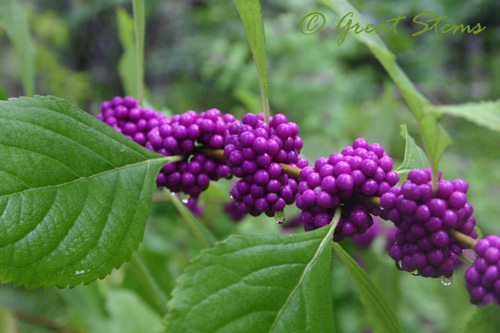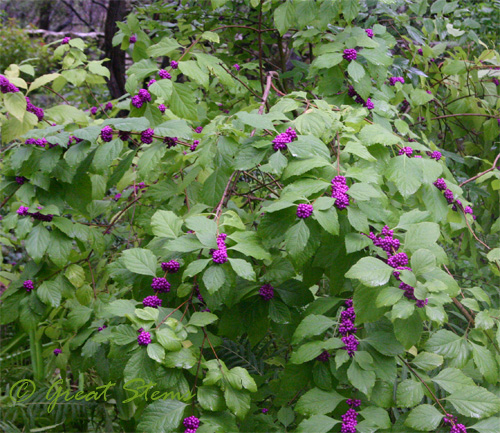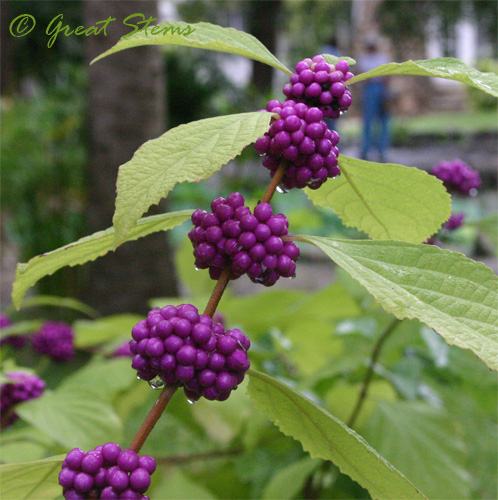The American Beautyberry, Callicarpa americana, is truly a sight to behold in the fall. The strikingly vibrant magenta-colored berries stand out boldly against the light-green foliage of this open, airy shrub.
 But aside from its beauty, what makes this shrub truly valuable is that it is a fall and winter food source for more than 40 different songbird species, as well as other birds. It also is enjoyed by mammalian wildlife, including the opossum and raccoon. Its deer resistance probably depends on your area and the harshness of seasonal weather. In some areas, deer leave the mature plants alone, but they’re happy to nibble on young shrubs and sometimes the berries. In general, though, it’s best to plant the shrub in a protected area if you are concerned about deer.
But aside from its beauty, what makes this shrub truly valuable is that it is a fall and winter food source for more than 40 different songbird species, as well as other birds. It also is enjoyed by mammalian wildlife, including the opossum and raccoon. Its deer resistance probably depends on your area and the harshness of seasonal weather. In some areas, deer leave the mature plants alone, but they’re happy to nibble on young shrubs and sometimes the berries. In general, though, it’s best to plant the shrub in a protected area if you are concerned about deer.
American Beautyberry is an excellent shrub for understory growth, and understory plants are a key part of successful wildlife habitats. They can provide food and/or places to hide, and despite its airy nature, the Beautyberry does both, particularly when several of the shrubs form a small colony.
 In the summer, the shrub has delightful pale flowers. But it is the beautiful clusters of purple berries that really provide that wow factor come fall. There is also a white variety, but if choosing a color most attractive to birds, I’d stick with purple.
In the summer, the shrub has delightful pale flowers. But it is the beautiful clusters of purple berries that really provide that wow factor come fall. There is also a white variety, but if choosing a color most attractive to birds, I’d stick with purple.
 The deciduous shrub is typically 5-6 feet tall when mature, but I’ve seen some get more than 8 feet tall. It prefers partial sun/partial shade, but with extra water and attention, it can handle more sun, too. But as an understory plant, it is at its best.
The deciduous shrub is typically 5-6 feet tall when mature, but I’ve seen some get more than 8 feet tall. It prefers partial sun/partial shade, but with extra water and attention, it can handle more sun, too. But as an understory plant, it is at its best.
American Beautyberry, according to wildflower.org, is native to all the states of the southern U.S., on up into Maryland, Missouri, and Oklahoma. It thrives in a variety of conditions of soil, water, and light conditions, and it is easily grown from seed as well. A worthy plant for your wildlife habitat!